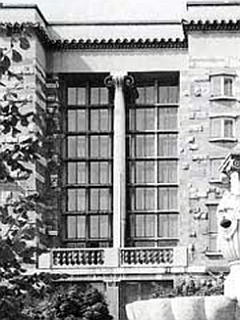
During the 20th century, several Slovenian architects became well-known even beyond their homeland. Damjan Gale also set out to follow in their footsteps, but his career ultimately took an unusual detour. He remained committed to architecture, but in a very different field – architectural photography.
Gale was born in Ljubljana in 1946. He studied architecture at the University of Ljubljana, and then worked as an architect alongside Edvard Ravnikar. At the time, Ravnikar was determined to keep Slovenian architecture at the forefront of the modernist movement and his team kept up with the latest trends in the profession.
Gale had a passion for architecture, but he was also drawn to photography, perhaps inspired by his father, who was a famous Slovenian movie director. After several years of working as an architect, Gale decided to combine his twin passions, and he became an architectural photographer – an unusual profession in Slovenia at the time.
Because of Gale’s deep familiarity with both the history of architecture and various architectural elements, he helped to bring some of Slovenia’s most interesting buildings to life. His photographs captured the interplay of light and shadow; he was also a master of portraying the importance of depth to architecture.
Some of Gale’s photographs documented Slovenia’s modern architecture, with which he was the most intimately familiar, but he also portrayed the work of Jože Plečnik, the idiosyncratic Slovenian architect known for his inventive reinterpretations of neo-classical designs. In fact, it was Gale’s collection of Plečnik photographs that first made him more widely known abroad. In the 1970s and ‘80s, his photographs were exhibited around the world – from New York and Mexico City to Paris and Munich.
Over the years, Gale won several awards, including the Plečnik Prize – a fitting tribute for a photographer who did so much to share the old master’s architecture with the world. Even though he remained best-known for portraying Plečnik’s unique creations, Gale was interested in various architectural eras. Some of his most memorable work focused on Slovenia’s Baroque architecture.
Gale’s sudden death in 1993 – he was just a few days shy of his 46th birthday – was a loss to both architecture and photography in Slovenia. But his work lived on. Just three years after his death, his photographs of Plečnik’s architecture were exhibited at the Prague Castle, a building that had been renovated by the famous Slovenian architect – whose work no one could capture quite like Gale.
Jaka Bartolj


































































